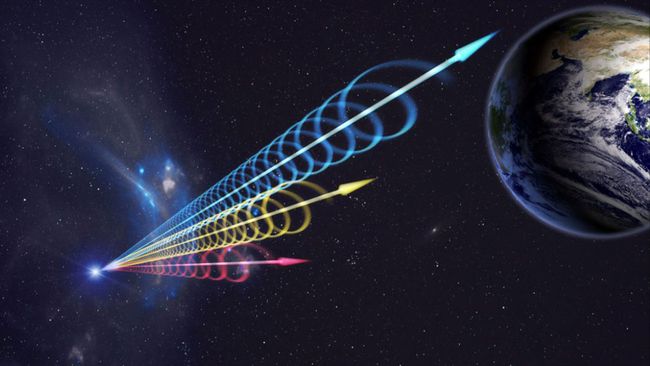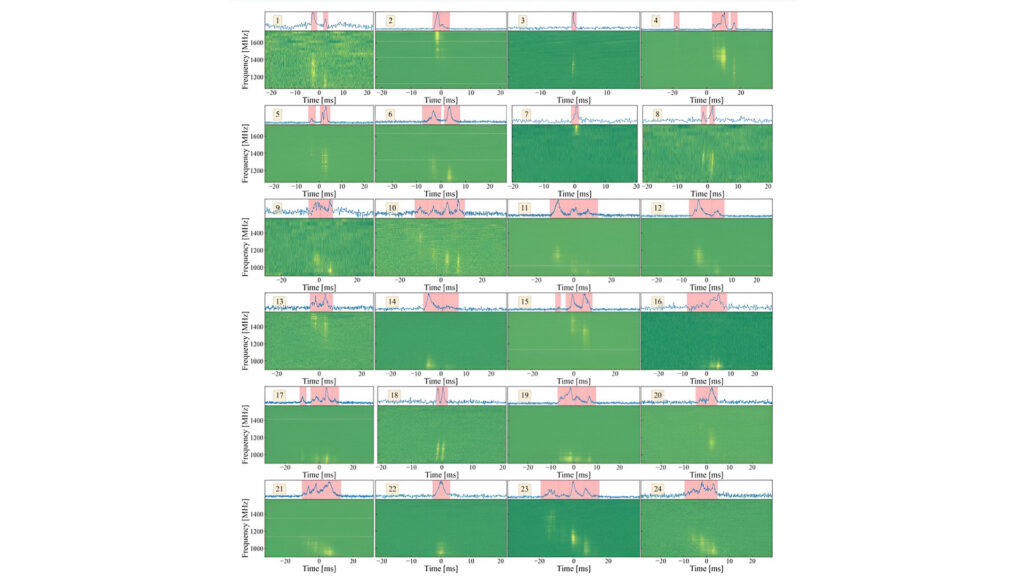Mysterious ‘Slide Whistle’ Fast Radio Burst Detected by Telescope Searching for Extraterrestrial Signals Defies Understanding
The intriguing patterns observed in 35 recurring fast radio bursts (FRBs) unveil fresh characteristics of these enigmatic bursts of cosmic radiation, which transiently emerge and vanish within milliseconds, offering new insights into their nature.

Astronomers observed 35 explosive bursts originating from an uncommon recurring “fast radio burst” (FRB), witnessing a frequency shift akin to a “cosmic slide whistle.” This blinking, unprecedented pattern sheds new light on these millisecond-long bursts of extragalactic light, capable of emitting as much energy in a few seconds as the sun does in a year. FRBs are thought to emanate from potent entities like magnetars, characterized by intense magnetic fields, or from cataclysmic occurrences such as stellar collisions or neutron star collapses forming black holes. Adding complexity, a minority of FRBs repeat their flashes from the same celestial location, unlike the majority that vanish after a single burst.
The research team employed the Allen Telescope Array (ATA) from the SETI Institute to study FRB 20220912A, a highly active recurring FRB. Over 541 hours (almost 23 days), they witnessed the bursts’ radiation spanning a broad range of radio wave frequencies in the electromagnetic spectrum. This progression culminated in an intriguing pattern hitherto unseen by astronomers, potentially shedding light on the origins of these deep-space phenomena.
These new insights might contribute to unraveling the mystery behind the origins of FRBs and why a small fraction exhibit repetitive and intense bursts of radiation. Sofia Sheikh, the lead author and a postdoctoral fellow at the SETI Institute, expressed excitement over the findings, highlighting how they confirm known FRB properties while uncovering new ones. Despite attributing FRBs to extreme objects like magnetars, existing models fall short in explaining all observed properties, adding to the ongoing intrigue surrounding these cosmic events.
The research, accepted for publication in the Monthly Notices of the Royal Astronomical Society, is available to read on arXiv.org.

Patterns and chaos in fast radio bursts
Sheikh and her team observed a unique behavior in the bursts of radiation emitted by FRB 20220912A: a downward shift in frequency resembling the descending toot of a slide whistle when translated into notes played on a xylophone. This unprecedented phenomenon among FRBs led to the discovery of a specific brightness cutoff point for these bursts, indicating the portion of the cosmic signal rate attributed to this FRB.
Despite a noticeable frequency pattern in the bursts of FRB 20220912A, no distinct pattern emerged regarding their duration or the intervals between them. This unpredictability underscores the inherent variability of repeating FRBs. Furthermore, the study showcased the valuable contribution of SETI’s ATA, originally designed for detecting radio signals from potential extraterrestrial civilizations, to the exploration of FRBs and the study of the universe’s most extraordinary phenomena and entities.
“It’s been an incredible experience to be involved in the inaugural FRB investigation utilizing the ATA. This research underscores how novel telescopes like the ATA, equipped with distinctive capabilities, can offer fresh perspectives on the enigmatic aspects of FRB science,” commented Sheikh on the study’s significance.
Do not forget to share your opinion with us to provide you with the best posts !



0 Comments